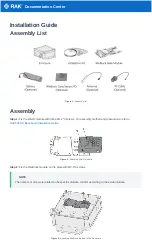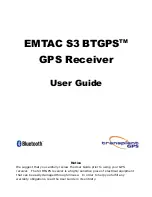
Seres Reference Manual
13
Note - Currently, only the AORE-E satellite is broadcasting.
Refer to Appendix D – Resources for information on how to
monitor the status of the ESTB.
Note - The satellite elevation angle lowers with increasing
distance away from the equator and from the satellite’s longitude.
Although a good amount of signal coverage is shown in Northern
latitudes for both WAAS and EGNOS, it may not be usable due
to its low elevation angle and the potential for it to be obstructed.
Ideally, testing of the system in the area of its use is
recommended to ensure that the signal is sufficiently available.
Note - The SBAS signal coverage may be present in some areas
without either sufficient ionospheric map coverage or satellites
with valid orbit and clock correctors. In such a case, differential
positioning with SBAS may not be desirable or possible, as four or
greater satellites (with correctors) must be available to compute
a DGPS position. The next section provides further information
on the ionospheric map features of SBAS and the Seres antenna.
Содержание Seres
Страница 1: ...Seres Reference Manual Part Number 875 0056 000 Date September 2002...
Страница 6: ...Seres Reference Manual vi...
Страница 14: ...Seres Reference Manual xiv...
Страница 16: ...Seres Reference Manual xvi Table A 1 Specifications 100...
Страница 34: ...Seres Reference Manual 14 Figure 1 1 WAAS Coverage...
Страница 35: ...Seres Reference Manual 15 Figure 1 2 EGNOS Coverage...
Страница 43: ...Seres Reference Manual 23...
Страница 127: ...Seres Reference Manual 107...
Страница 129: ...Seres Reference Manual 109...
Страница 132: ...Seres Reference Manual 112...
















































